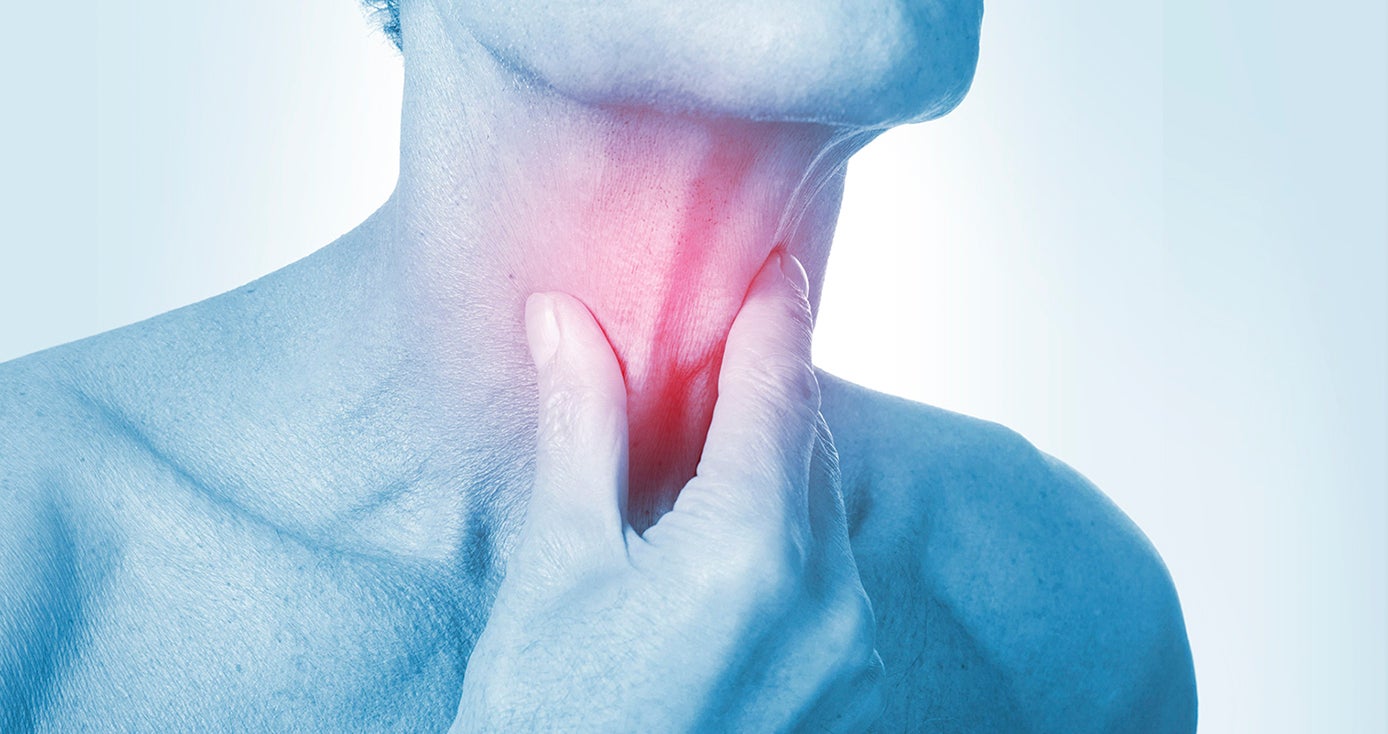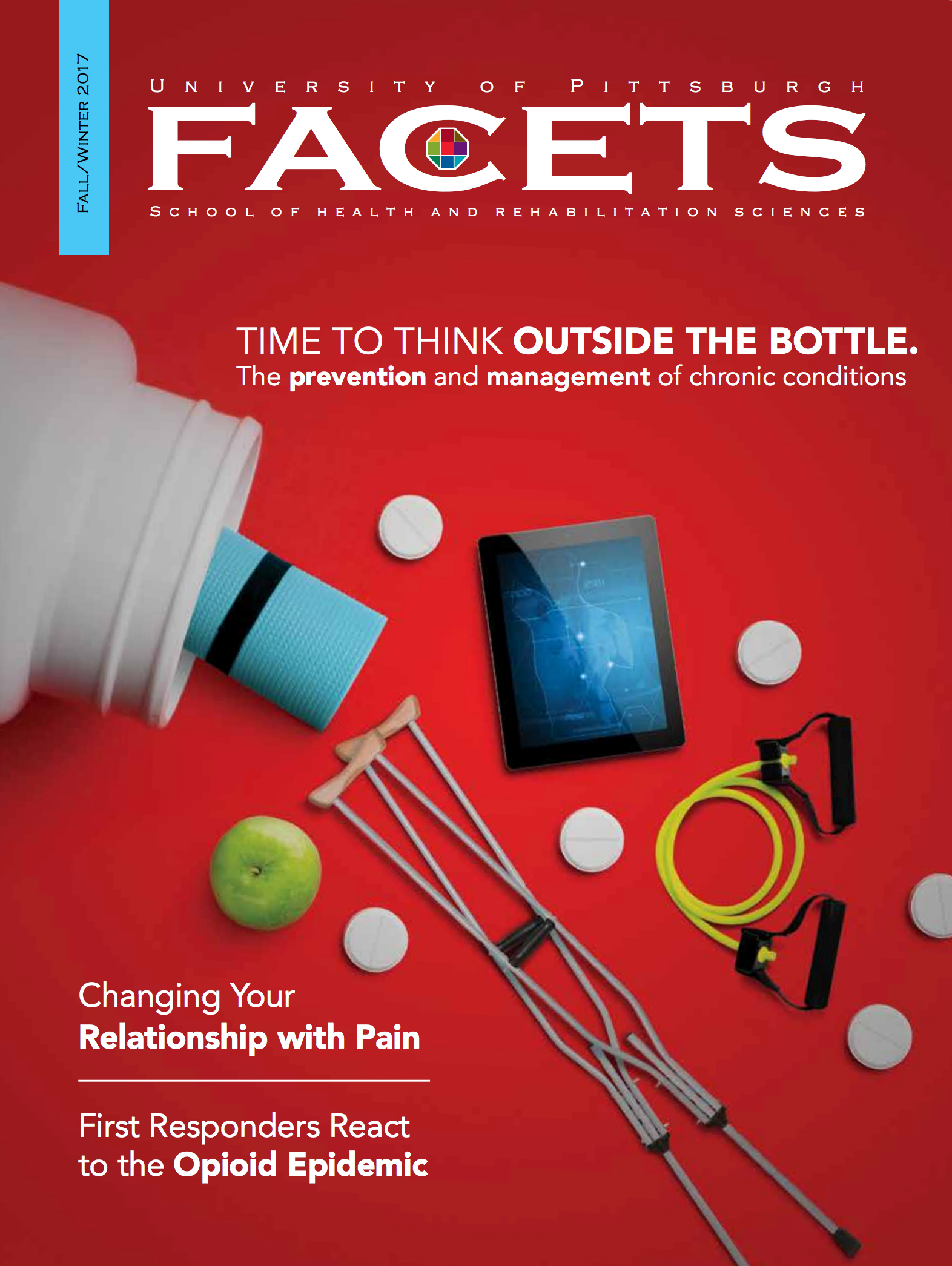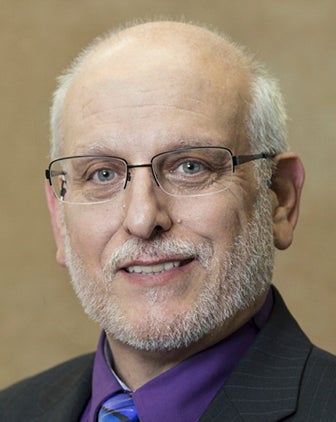
Subscribe to Pittwire Today
Get the most interesting and important stories from the University of Pittsburgh.Students Help Patients With Swallowing Disorders, One Drop of Water at a Time
This story is adapted from the fall/winter issue of FACETS, the magazine from the School of Health and Rehabilitation Sciences.
“We meet for business lunches. We join friends for dinner and drinks. We crave the taste of an ice cream cone during the summer and hot cocoa during the winter. Can you imagine living without any of that?” asked Angela Selby, graduate student in the Speech-Language Pathology program in the Department of Communication Science and Disorders (CSD).
Selby is describing life for people with dysphagia, or swallowing disorders. She helped to treat these individuals during a clinical rotation at the UPMC Swallowing Disorders Center with CSD Professor James Coyle.
“We’re working with an invisible disability,” said Coyle. “People with swallowing disorders may look like everyone else. But the fact is, they can’t socialize with family and friends around the dinner table, they can’t always get proper nutrition, and they don’t enjoy the nurturing that we associate with food.”
Adults may experience dysphagia as a result of serious medical conditions such as stroke, Parkinson’s disease, head and neck cancers and other severe neurological problems. They often require feeding tubes and many years of treatment.
“When a patient has a stroke, it disrupts the ability of the brain and brain stem to coordinate muscles of the mouth and throat. The communication signal is simply lost or seriously disrupted,” explained Coyle. “While other muscles that we consciously control may gradually repair themselves, the ones associated with swallowing are often the last to recover because swallowing is not a fully conscious function.”
When patients come to the Swallowing Disorders Center, Coyle, along with his colleagues in the Department of Otolaryngology, evaluates the physiology of their condition, performs a number of tests and then determines what intervention strategies may help them learn to swallow again.
Interventions may include exercises to strengthen the muscles of the throat or tongue, or compensatory maneuvers such as head postures to redirect swallowed material, retraining the coordination of breathing and swallowing, or other swallow maneuvers that require the patient to control many aspects of swallowing function they never thought of before.
Graduate student Kaitlin Fagan, who completed a clinical placement at the Swallowing Disorders Center last summer, observed that interventions vary with every patient depending on his or her medical condition. “The exercises are prescribed to the patient much like a personal trainer would draw up a schedule for a client,” said Fagan. “Sometimes it takes longer than eight weeks to see even the smallest improvement.
“But when you work with someone with a chronic condition, you celebrate the little victories,” she said.
“It is important for patients to know in the very beginning what they should expect and that, while results likely won’t be immediate, staying with it for the long haul can help them achieve their personal goals,” added another graduate student clinician, Claire Ziegler. “One of the biggest ways to engender the process is to build rapport with them.”
Coyle built a special rapport with one patient who had experienced multiple strokes and his swallowing disorder was complicated by respiratory failure. “This was a patient with longstanding dysphagia who had not eaten by mouth for three years,” Coyle said. “But he was also very determined. He agreed to participate in one of our swallowing research studies and we tried different exercises and compensations to help him swallow.”
Eventually, the patient began to successfully swallow one drop of water at a time.
“Severe dysphagia like this can cause some serious side effects including pneumonia and malnutrition,” said Coyle. “In addition, even small amounts of food and drops of water can be aspirated into the lungs so we need to continually monitor the safety of the swallow and whether any medical complications arise as a result of resuming oral intake.”
Coyle continued to work with this particular patient after the study was completed. “He never suffered an adverse medical complication despite ongoing swallow impairments, but we set a goal for him to be able to sit at the Thanksgiving table with his family and eat mashed potatoes,” said Coyle. “Much to his delight — and ours — he accomplished his goal and by the following Thanksgiving he had a full meal with his family.”
“Working with this individual was rather eye-opening and reassuring,” said graduate student Sarah Dubrow, who began her clinical rotation with Coyle when the patient first began to eat solids. “His complicated medical history and chronic condition would have typically seemed detrimental to his swallowing function. His case speaks to the importance of persistence and encouragement, and how they can truly benefit a patient’s swallowing.”
According to Coyle, “There’s no doubt that a supportive family can really make a difference. Here was a man who had all but given up hope of eating solid foods! Although his unique medical condition still requires him to use a feeding tube for liquids, he is now able to sit down at the table and enjoy solid foods with his friends and family.”




